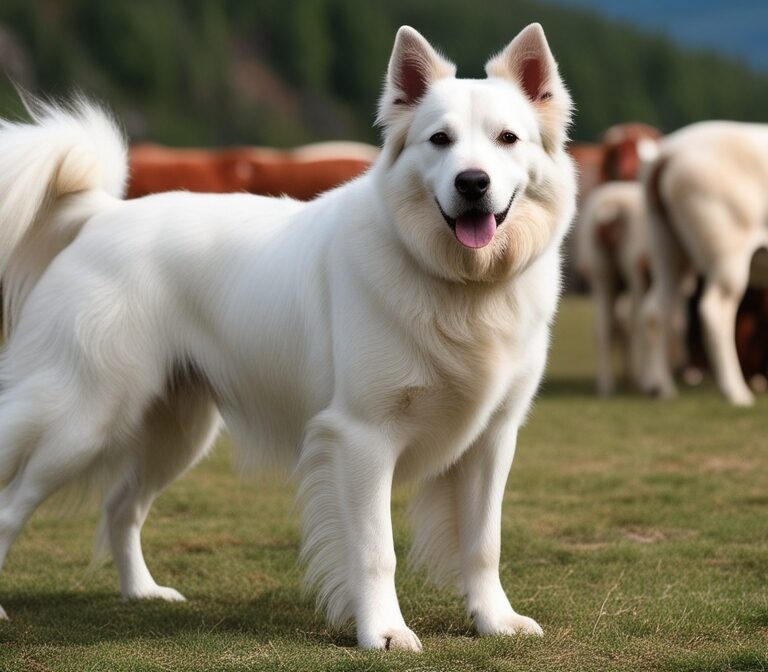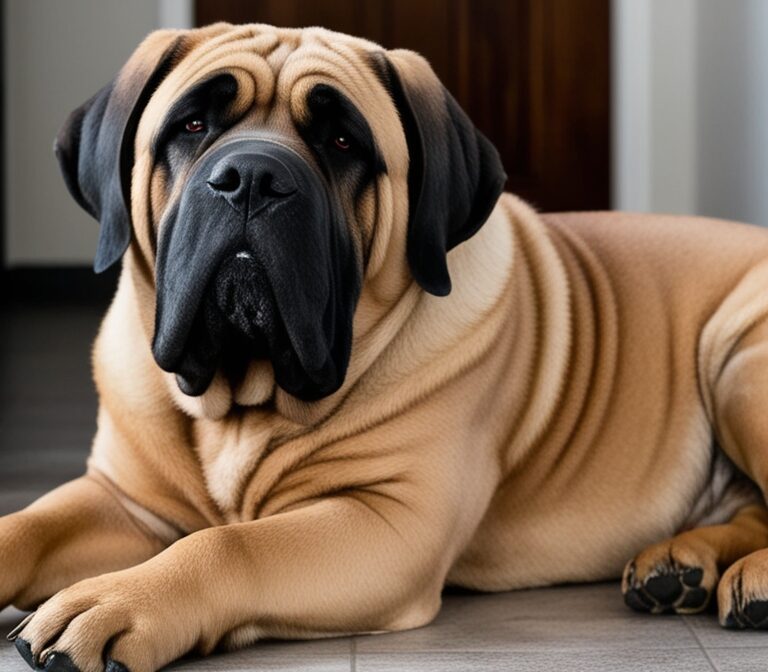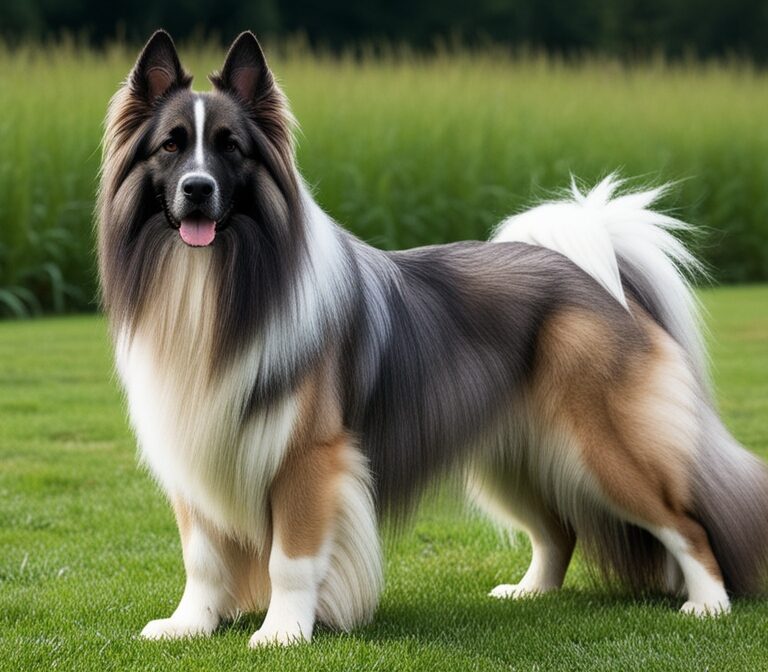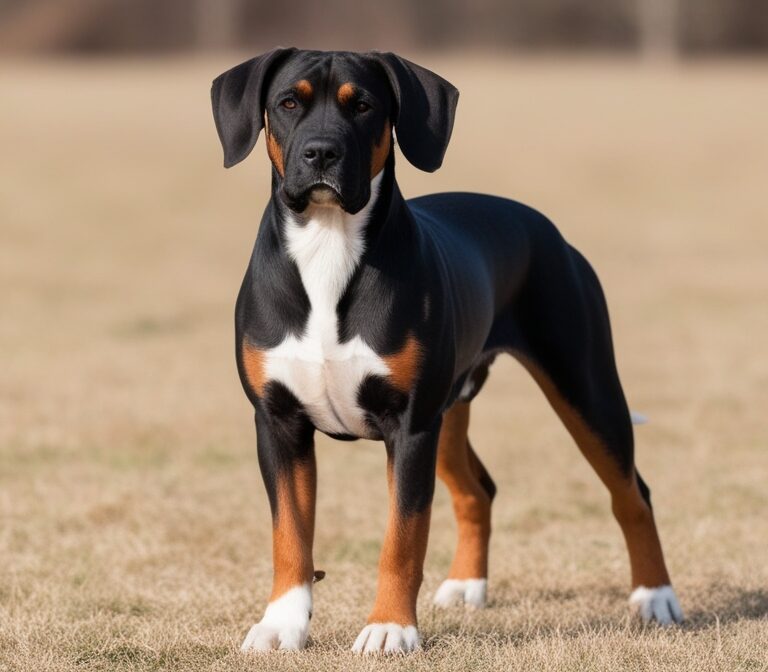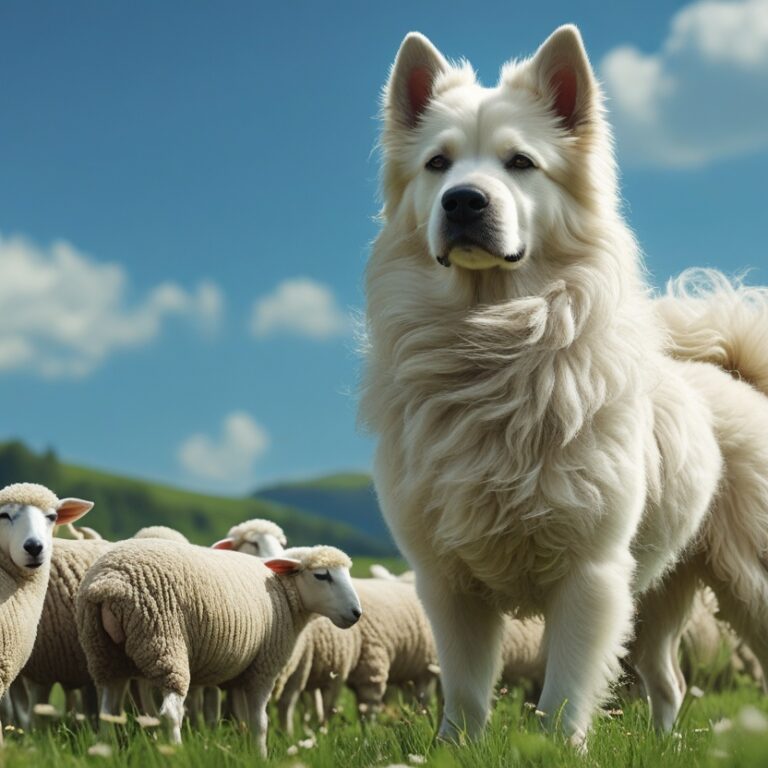Pyrenean Mastiff: The Complete Guide to the Gentle Giant from Spain
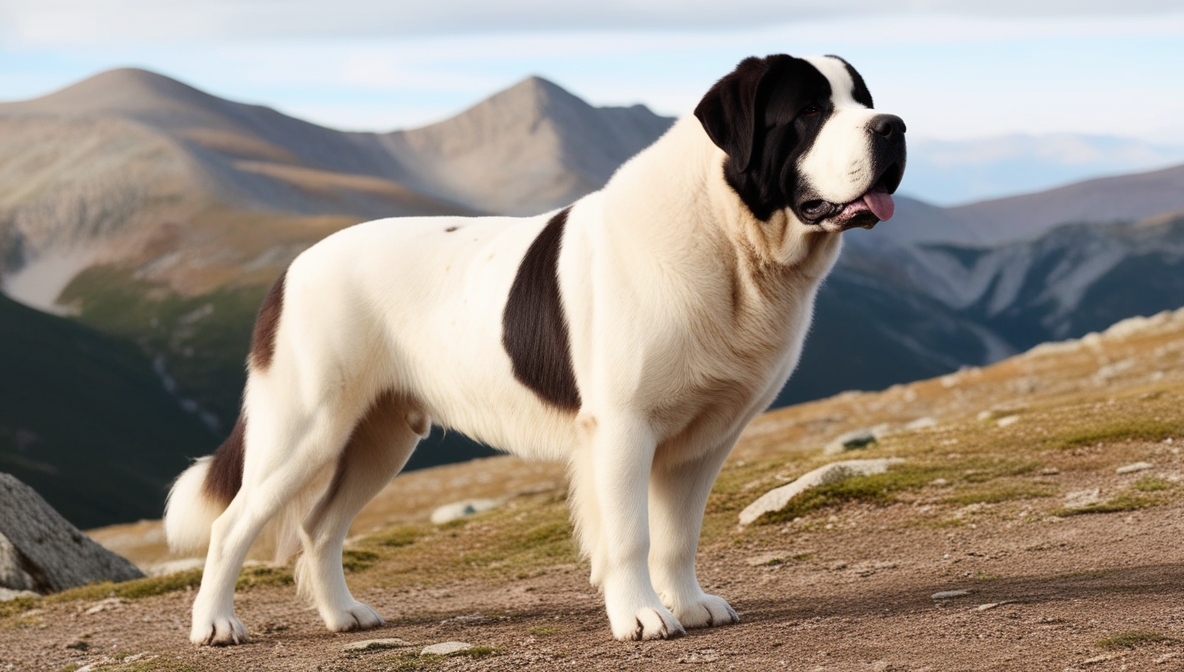
Introduction to the Pyrenean Mastiff
The Pyrenean Mastiff is a giant dog breed renowned for its majestic presence, protective instincts, and gentle temperament. Originating from the Aragonese region of the Pyrenees in Spain, this breed was developed as a livestock guardian dog to protect sheep and cattle from predators such as wolves and bears. Weighing an average of 81 kg and standing between 71–77 cm tall, the Pyrenean Mastiff is classified as one of the giant dog breeds, often compared with the Spanish Mastiff, Great Pyrenees, and St. Bernard.
Unlike some mastiff breeds that may display aggression, the Pyrenean Mastiff is widely praised as a gentle giant. Its personality combines loyalty, calmness, and devotion to family, making it equally suited as a working guardian or a family companion. With its thick double coat, predominantly white with dark patches, this breed has evolved to endure cold mountain climates while maintaining a dignified, noble appearance.
Modern-day Pyrenean Mastiffs are not only found guarding flocks in rural Spain but are also cherished worldwide as family dogs, particularly among households that can accommodate their size and exercise needs. The breed is officially recognized by the Fédération Cynologique Internationale (FCI) and continues to gain attention among dog lovers for its balance of protective instincts and affectionate demeanor.
In this guide, we’ll explore the history, temperament, care, health, training, and lifestyle needs of the Pyrenean Mastiff, while also comparing it with similar mastiff breeds. Whether you’re considering adoption, researching as a breeder, or simply fascinated by large guardian dogs, this article offers a comprehensive overview of everything you need to know about this remarkable livestock guardian dog.
History and Origin of the Pyrenean Mastiff
The Pyrenean Mastiff’s history traces back several centuries to the Aragonese Pyrenees in northeastern Spain, where it was bred specifically to serve as a livestock guardian. Its main role was to defend sheep and cattle from predators during the seasonal transhumance, a traditional practice where shepherds moved their flocks across mountain ranges. These dogs worked tirelessly, often in harsh climates, to keep predators at bay while also serving as loyal companions to shepherds.
Historians suggest that the Pyrenean Mastiff descended from ancient molosser dogs, the same ancestral line that gave rise to many mastiff breeds across Europe and Asia. Over time, selective breeding in the Pyrenees mountains produced a dog with the strength, endurance, and temperament suited for mountain life. Its massive frame, dense coat, and protective instincts made it ideal for this role.
During medieval times, Pyrenean Mastiffs were also valued by nobility and landowners, who used them as estate guardians. Their sheer size alone served as a deterrent against intruders, both human and animal. Despite this imposing presence, historical accounts describe them as calm and stable in nature, distinguishing them from more aggressive working breeds.
The breed nearly faced decline in the early 20th century due to economic hardships in Spain, as well as the decreased need for livestock guardians with the reduction of wolves in certain regions. However, dedicated breeders and enthusiasts worked to preserve the Pyrenean Mastiff, ensuring its survival into modern times.
Today, the breed enjoys recognition from the FCI (Fédération Cynologique Internationale) under the group of Molossoid breeds, mountain type, highlighting its heritage as both a guardian dog and a companion breed. While still relatively rare compared to other giant breeds, it has gained popularity in Europe, the United States, and beyond for its combination of majestic appearance and affectionate temperament.
Recognition by Kennel Clubs and Organizations
The Pyrenean Mastiff is officially recognized as a distinct breed by several major canine organizations, with breed standards carefully outlining its appearance, temperament, and functional role.
The Fédération Cynologique Internationale (FCI) is the primary body recognizing the Pyrenean Mastiff, classifying it under Group 2: Pinscher and Schnauzer – Molossoid breeds – Swiss Mountain and Cattledogs, Section 2.2: Molossoid breeds, Mountain type. The FCI standard emphasizes the breed’s imposing size, balanced build, and protective yet calm temperament, making it clear that the Pyrenean Mastiff is not bred for aggression but for reliable guarding and companionship.
In Spain, the Club del Mastín del Pirineo de España (CMPE) serves as the official breed club, actively working to preserve the original characteristics of the breed. This includes organizing exhibitions, supporting breeders, and conducting genetic studies to maintain health and diversity.
While the American Kennel Club (AKC) does not yet fully recognize the Pyrenean Mastiff in its main registry, the breed is listed under the AKC Foundation Stock Service (FSS). This category serves as a step toward eventual full recognition, allowing breeders and enthusiasts in the United States to record pedigrees and build breed awareness.
Other organizations, such as the United Kennel Club (UKC) and rare breed registries, also include the Pyrenean Mastiff, reflecting its growing presence worldwide. In recent decades, dog enthusiasts have increasingly sought giant guardian breeds that combine protection with a manageable temperament, leading to the Pyrenean Mastiff’s rise in popularity.
The global recognition of this breed ensures that its standards are maintained across different countries, protecting it from crossbreeding and dilution. Furthermore, recognition highlights its versatility—not just as a livestock guardian, but as a show dog and family companion.
Physical Characteristics of the Pyrenean Mastiff
The Pyrenean Mastiff is classified as a giant dog breed, with its size being one of the most defining features. Males typically stand around 77 cm at the shoulder, while females are slightly smaller at 71 cm. Adult dogs average 81 kg in weight, though some exceptional males may exceed 90 kg. This immense size is paired with a robust skeletal structure and strong musculature, built for endurance rather than speed.
The breed’s coat is another hallmark characteristic. The Pyrenean Mastiff has a dense double coat, consisting of a coarse outer layer and a soft undercoat, providing insulation against harsh mountain climates. The coat is predominantly white, adorned with distinct patches of color (often black, brown, gray, or brindle) distributed across the head, ears, and body. One of the most distinctive features is its mask, a darker marking around the eyes and muzzle that gives the breed its signature expression.
The head is large but proportionate, featuring a broad skull, well-developed muzzle, and strong jaws. Its eyes are medium-sized, expressive, and typically dark brown, radiating a calm and dignified look. The ears are triangular, hanging close to the head, while the tail is long and carried with a slight curve when alert.
Despite its size, the Pyrenean Mastiff’s movement is surprisingly agile. It has a steady, ground-covering gait, showing balance and power without clumsiness. The breed standard emphasizes functional build, as these dogs were bred to work in rugged terrain while accompanying flocks for long hours.
Compared with other mastiff breeds, the Pyrenean Mastiff is less heavyset than the Spanish Mastiff, yet larger and more imposing than the Great Pyrenees. This balance of size, agility, and endurance reflects its dual purpose: a livestock guardian capable of repelling predators and a companion dog suited for family life.
The physical appearance of the Pyrenean Mastiff communicates nobility, strength, and calm assurance. Its thick coat and protective markings serve not only as aesthetic features but also as vital adaptations for its original role in mountain guarding.
Temperament and Personality
The temperament of the Pyrenean Mastiff is often described as that of a gentle giant. Despite its imposing size and protective instincts, this breed is remarkably calm, affectionate, and loyal to its family. Historically bred as a livestock guardian dog, it retains strong instincts to protect its territory and loved ones, but it does so with measured composure rather than aggression.
One of the breed’s most admirable traits is its balanced nature. The Pyrenean Mastiff is alert and watchful, yet not prone to unnecessary barking or hostility. It assesses threats carefully, responding only when needed. This makes it an ideal guardian dog in both rural and suburban settings. Owners often describe the breed as courageous without recklessness—a trait that sets it apart from more reactive watchdogs.
In the home environment, the Pyrenean Mastiff thrives as a family companion. It is naturally gentle with children, often acting as a calm protector who tolerates play with patience. Its affectionate side is most evident in how it bonds closely with its household, seeking companionship and displaying loyalty. The breed also tends to get along with other pets, particularly if socialized from a young age.
While affectionate, the Pyrenean Mastiff is not overly demanding of attention. It enjoys companionship but also values its independence, a trait inherited from centuries of guarding flocks with minimal human supervision. Owners should understand that this breed prefers a steady, consistent routine and does not adapt well to chaotic environments.
Intelligence and sensitivity are key aspects of its personality. The Pyrenean Mastiff responds well to calm, confident leadership, making it trainable with positive reinforcement techniques. However, its independent streak means it may not always follow commands blindly—it prefers to think through situations, much like it would in the field.
Overall, the Pyrenean Mastiff’s temperament can be summarized as protective, loyal, gentle, and intelligent. This makes it an excellent choice for families seeking both a guardian and a companion, provided they have the space, time, and commitment to meet its needs.
Pyrenean Mastiff as a Livestock Guardian
The Pyrenean Mastiff’s role as a livestock guardian dog (LGD) is central to its identity and history. For centuries, shepherds in the Aragonese Pyrenees relied on these dogs to protect sheep and cattle during seasonal migrations, known as transhumance. Wolves, bears, and other predators were constant threats, and the Pyrenean Mastiff’s size, courage, and endurance made it a reliable protector.
Unlike traditional guard dogs that rely on aggression, the Pyrenean Mastiff guards through presence and deterrence. Its massive frame and deep bark are often enough to discourage predators before a conflict arises. If necessary, it will confront threats with bravery, but its approach is measured and deliberate, minimizing unnecessary risk.
One unique feature of this breed is its ability to work independently. While guarding flocks, Pyrenean Mastiffs often operated without direct supervision, making decisions on their own to keep livestock safe. This independence is still evident in modern Pyrenean Mastiffs, contributing to their thoughtful, calm demeanor.
When compared with other livestock guardian breeds, such as the Great Pyrenees, Spanish Mastiff, and Anatolian Shepherd, the Pyrenean Mastiff stands out for its combination of gentleness and courage. While it shares protective instincts with these breeds, it is often less reactive, choosing to assess situations carefully before acting.
Even today, Pyrenean Mastiffs are used in parts of Spain to guard flocks, particularly in regions where wolves have re-emerged. Beyond traditional work, they also adapt well to being property guardians, serving as deterrents against intruders while remaining affectionate with family members.
This dual role—as both a guardian and companion—is one of the reasons the breed is gaining popularity worldwide. It offers the protective qualities of a working dog while maintaining the temperament of a trustworthy family pet.
Conclusion:
The Pyrenean Mastiff represents the perfect balance between guardian strength and family companionship. Originating from the Aragonese Pyrenees of Spain, this giant livestock guardian dog has spent centuries protecting flocks from wolves and bears while also proving itself as a calm, affectionate, and intelligent partner to shepherds. Today, it continues to impress families worldwide as both a protective watchdog and a gentle household companion.
Owning a Pyrenean Mastiff comes with immense rewards but also specific responsibilities. Its protective instincts, loyalty, and gentle temperament make it a wonderful fit for families with children, other pets, or large properties. However, prospective owners must be prepared for the realities of life with a giant breed: substantial feeding requirements, consistent grooming, and the need for adequate space and exercise. Health considerations, particularly issues like hip dysplasia and bloat, require proactive veterinary care and attention to diet.
When compared to similar breeds such as the Spanish Mastiff, Great Pyrenees, or St. Bernard, the Pyrenean Mastiff distinguishes itself through its measured temperament. It is protective without being overly aggressive, affectionate without being clingy, and independent without being aloof. This balance makes it one of the most versatile and reliable large guardian breeds.
For families seeking a dog that combines dignity, courage, and affection, the Pyrenean Mastiff stands out as an exceptional choice. Its ability to serve as a guardian of livestock, property protector, and loving family pet makes it more than just a working breed—it is a true companion that enriches the lives of those who can meet its needs.
In conclusion, the Pyrenean Mastiff is best suited for experienced dog owners who can provide structure, space, and affection. With the right environment, this breed will reward you with unwavering loyalty, calm protection, and the companionship of a gentle giant whose presence brings both security and warmth to any home.
